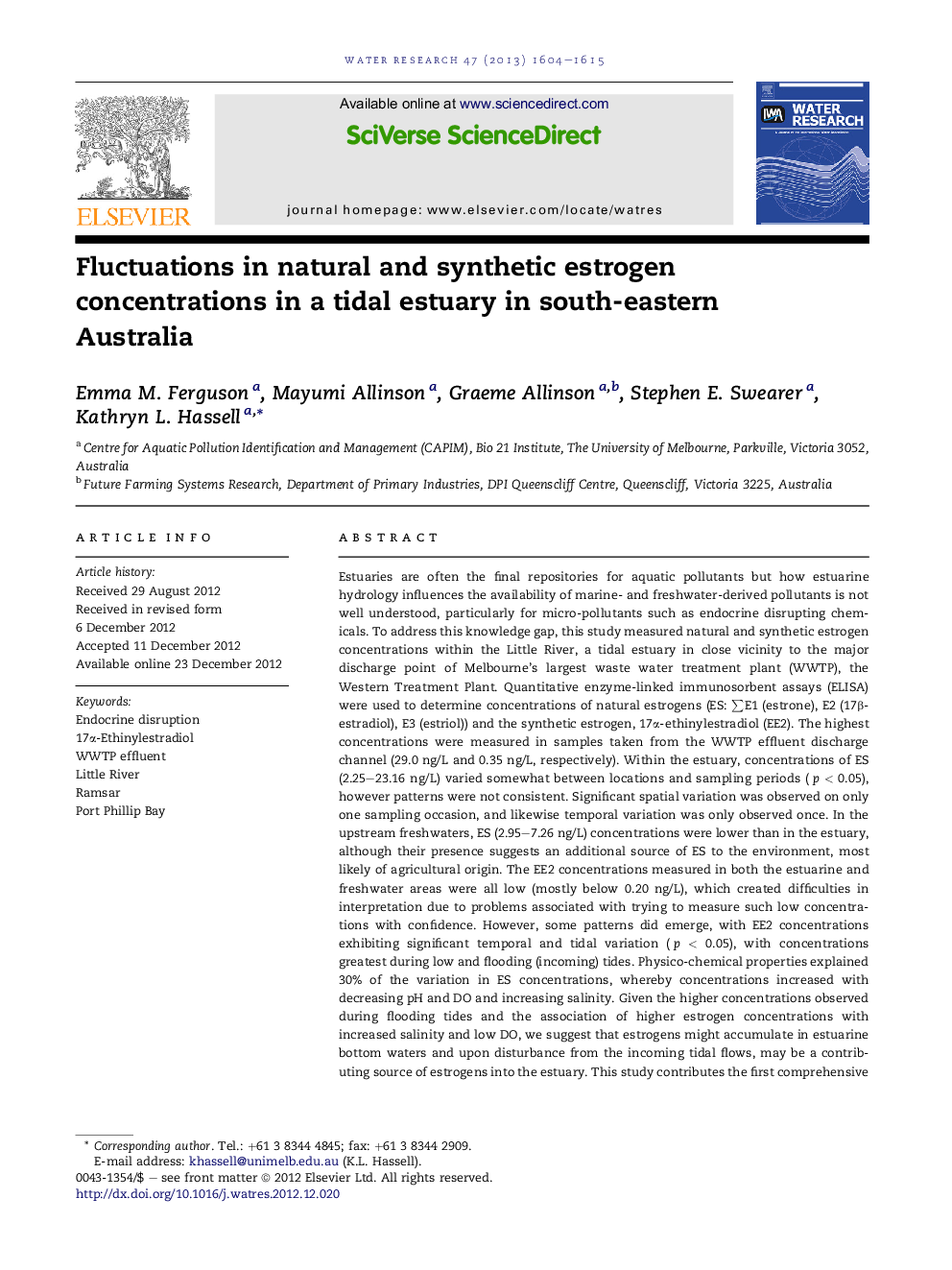| کد مقاله | کد نشریه | سال انتشار | مقاله انگلیسی | نسخه تمام متن |
|---|---|---|---|---|
| 4482152 | 1316849 | 2013 | 12 صفحه PDF | دانلود رایگان |

Estuaries are often the final repositories for aquatic pollutants but how estuarine hydrology influences the availability of marine- and freshwater-derived pollutants is not well understood, particularly for micro-pollutants such as endocrine disrupting chemicals. To address this knowledge gap, this study measured natural and synthetic estrogen concentrations within the Little River, a tidal estuary in close vicinity to the major discharge point of Melbourne's largest waste water treatment plant (WWTP), the Western Treatment Plant. Quantitative enzyme-linked immunosorbent assays (ELISA) were used to determine concentrations of natural estrogens (ES: ∑E1 (estrone), E2 (17β-estradiol), E3 (estriol)) and the synthetic estrogen, 17α-ethinylestradiol (EE2). The highest concentrations were measured in samples taken from the WWTP effluent discharge channel (29.0 ng/L and 0.35 ng/L, respectively). Within the estuary, concentrations of ES (2.25–23.16 ng/L) varied somewhat between locations and sampling periods (p < 0.05), however patterns were not consistent. Significant spatial variation was observed on only one sampling occasion, and likewise temporal variation was only observed once. In the upstream freshwaters, ES (2.95–7.26 ng/L) concentrations were lower than in the estuary, although their presence suggests an additional source of ES to the environment, most likely of agricultural origin. The EE2 concentrations measured in both the estuarine and freshwater areas were all low (mostly below 0.20 ng/L), which created difficulties in interpretation due to problems associated with trying to measure such low concentrations with confidence. However, some patterns did emerge, with EE2 concentrations exhibiting significant temporal and tidal variation (p < 0.05), with concentrations greatest during low and flooding (incoming) tides. Physico-chemical properties explained 30% of the variation in ES concentrations, whereby concentrations increased with decreasing pH and DO and increasing salinity. Given the higher concentrations observed during flooding tides and the association of higher estrogen concentrations with increased salinity and low DO, we suggest that estrogens might accumulate in estuarine bottom waters and upon disturbance from the incoming tidal flows, may be a contributing source of estrogens into the estuary. This study contributes the first comprehensive investigation of estrogen dynamics in an Australian estuary, and provides the foundation for further research aimed at identifying which compounds are present in estuarine waterways, where they are coming from and how their concentrations vary through space and time.
Figure optionsDownload high-quality image (67 K)Download as PowerPoint slideHighlights
► We quantify natural and synthetic estrogen concentrations in a tidal estuary.
► We show that concentrations vary with tidal water movement.
► Concentrations of natural and synthetic estrogens in this estuary show spatial and temporal variability.
Journal: Water Research - Volume 47, Issue 4, 15 March 2013, Pages 1604–1615